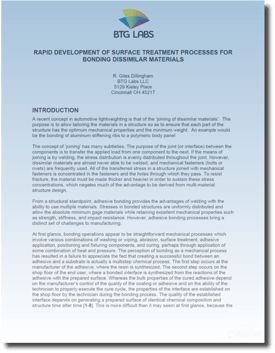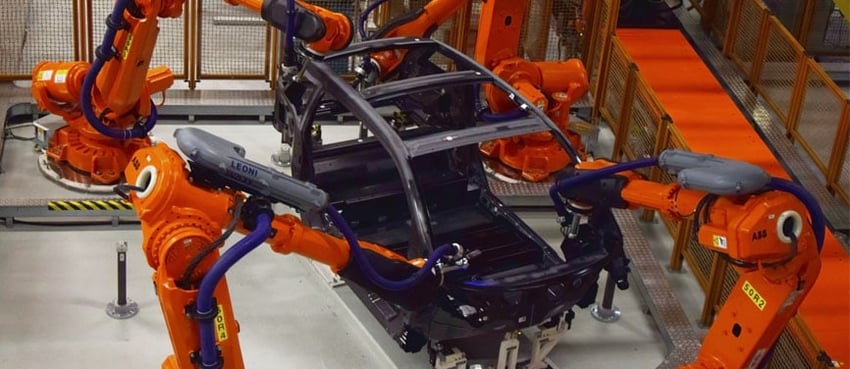A recent concept in automotive lightweighting is that of the ‘joining of dissimilar materials.’ The purpose is to allow tailoring the materials in a structure so as to ensure that each part of the structure has the optimum mechanical properties and minimum weight. An example would be the bonding of aluminum stiffening ribs to a polymeric body panel.
The concept of ‘joining’ has many subtleties. The purpose of the joint (or interface) between the components is to transfer the applied load from one component to the next. If the means of joining is by welding, the stress distribution is evenly distributed throughout the joint.
However, dissimilar materials are almost never able to be welded, and mechanical fasteners (bolts or rivets) are frequently used. All of the transferred stress in a structure joined with mechanical fasteners is concentrated in the fasteners and the holes through which they pass.
To resist fracture, the material must be made thicker and heavier in order to sustain these stress concentrations, which negates much of the advantage to be derived from multi-material structure design.
From a structural standpoint, adhesive bonding provides the advantages of welding with the ability to use multiple materials. Stresses in bonded structures are uniformly distributed and allow the absolute minimum gage materials while retaining excellent mechanical properties such as strength, stiffness, and impact resistance. However, adhesive bonding processes bring a distinct set of challenges to manufacturing.
At first glance, bonding operations appear to be straightforward mechanical processes that involve various combinations of washing or wiping, abrasion, surface treatment, adhesive application, positioning, and fixturing components, and curing, perhaps through the application of some combination of heat and pressure. The perception of bonding as a mechanical process has resulted in a failure to appreciate the fact that creating a successful bond between an adhesive and a substrate is actually a multi-step chemical process.
The first step occurs at the manufacturer of the adhesive, where the resin is synthesized. The second step occurs on the shop floor of the end user, where a bonded interface is synthesized from the reactions of the adhesive with the prepared surface. Whereas the bulk properties of the cured adhesive depend on the manufacturer’s control of the quality of the coating or adhesive and on the ability of the technician to properly execute the cure cycle, the properties of the interface are established on the shop floor by the technician during the bonding process.
 The quality of the established interface depends on generating a prepared surface of identical chemical composition and structure time after time [1-8]. This is more difficult than it may seem at first glance because the properties of a surface are determined by the composition and structure of only the uppermost 2 to 3 molecular layers. By way of contrast, a fingerprint leaves a layer of oils and fatty acids that is around 1000 molecular layers thick. The residue from a human’s breath is hundreds of molecules thick. What might seem to be insignificant changes in incoming material, storage, handling, processing, or environment can actually result in large changes in the properties of a surface and, therefore, the properties of an adhesive bond.
The quality of the established interface depends on generating a prepared surface of identical chemical composition and structure time after time [1-8]. This is more difficult than it may seem at first glance because the properties of a surface are determined by the composition and structure of only the uppermost 2 to 3 molecular layers. By way of contrast, a fingerprint leaves a layer of oils and fatty acids that is around 1000 molecular layers thick. The residue from a human’s breath is hundreds of molecules thick. What might seem to be insignificant changes in incoming material, storage, handling, processing, or environment can actually result in large changes in the properties of a surface and, therefore, the properties of an adhesive bond.
Download the full technical paper: Developing Surface Treatment Processes for Bonding Dissimilar Materials
Rethink your adhesion manufacturing processes with Surface Intelligence.

